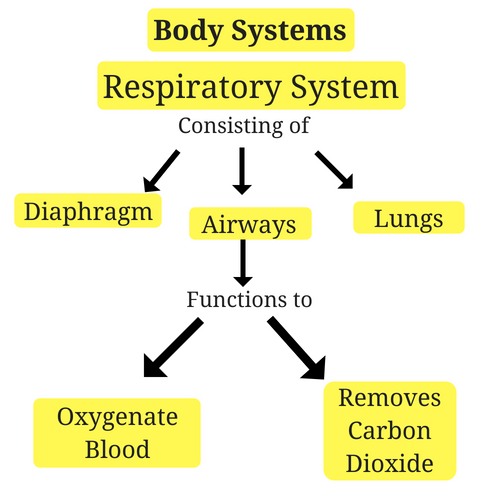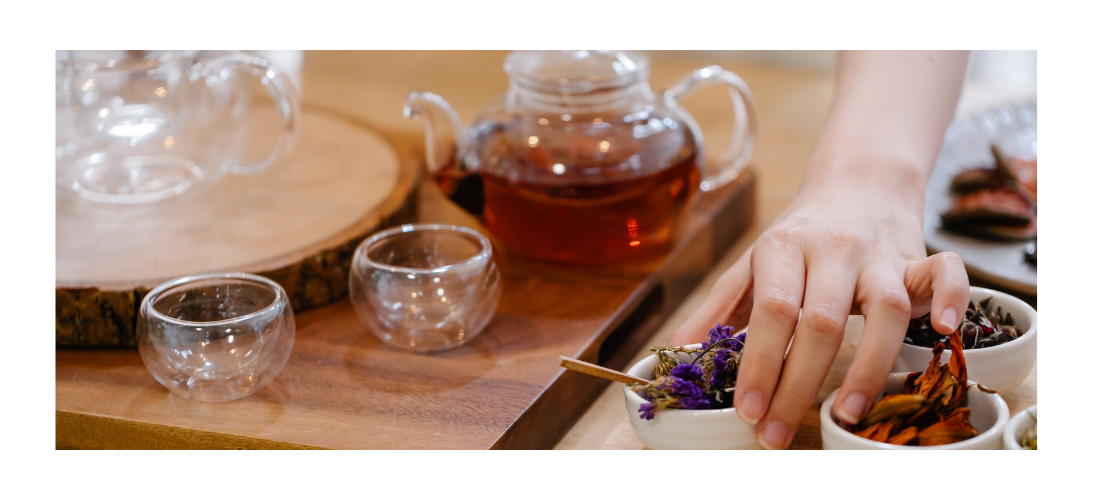Chinese Herbs for Respiratory Health: Seasonal Lung Support with TCM
Quick Definition
Traditional Chinese herbs such as Ban Lan Gen, Yin Qiao San, Bai He, Xing Ren, and Luo Han Guo are used to support seasonal lung comfort, soothe the throat, and maintain immune balance during colder months. While not cures, they can play a supportive role in respiratory health.
Introduction: Why Lung Health Matters in Fall and Winter
Every year as the air cools and flu season approaches, people experience an increase in coughs, scratchy throats, and respiratory imbalances. In fact, according to the CDC, seasonal respiratory illnesses peak from October through March.
While Western remedies often target immediate symptom relief, Traditional Chinese Medicine (TCM) takes a broader view: the lungs are not only responsible for breathing, but also for immune defense, energy flow, and skin health.
For over 2,000 years, Chinese herbs have been used to strengthen lung function, maintain throat comfort, and support overall immunity during seasonal changes. Unlike single-ingredient supplements, TCM relies on balanced formulas designed to both address symptoms and strengthen underlying vitality.
This guide explores the most effective herbs and formulas for seasonal lung support, how they work from both modern and traditional perspectives, and safe ways to integrate them into your wellness routine.
 How TCM Understands Respiratory Health
How TCM Understands Respiratory Health
The Role of the Lungs
In TCM, the lungs are called the “delicate organ” because they are the first line of defense against external pathogens like wind, cold, and dryness. The lungs also:
-
Govern Qi (vital energy) and respiration
-
Disperse protective energy across the body (“Wei Qi”)
-
Maintain fluid balance and skin health
Common Respiratory Imbalances in TCM
-
Wind-Heat Invasion: Sore throat, fever, cough, dryness (early colds/flu).
-
Wind-Cold Invasion: Runny nose, chills, body aches (classic “catching a cold”).
-
Lung Yin Deficiency: Dry throat, persistent mild cough, thirst, hoarse voice.
-
Phlegm-Heat: Thick mucus, congestion, difficulty breathing easily.
By recognizing patterns, TCM practitioners select herbs that restore balance, ease discomfort, and strengthen long-term resilience.

Comparison & Alternatives Section
| Option | Focus | Best For | Considerations |
|---|---|---|---|
| Yin Qiao San | Wind-Heat, early colds | Scratchy throat, mild fever | Best at first sign |
| Ban Lan Gen | Clears heat, throat support | Immune balance | Can be cooling |
| Bai He | Nourishes Yin | Dry cough, lingering irritation | Best after illness |
Top 5 Chinese Herbs for Respiratory and Throat Support
1. Ban Lan Gen (Isatis Root)
-
When to use: At the first signs of throat irritation or seasonal exposure.
-
Why: Clears heat, supports throat and lung comfort.
-
How to use: Decoction, instant granules, or Ban Lan Gen Chong Ji powder drink.
-
Research: Studies suggest Ban Lan Gen extracts may support immune defenses and have antiviral activity (PubMed: Phytother Res. 2020).
2. Yin Qiao San (Honeysuckle & Forsythia Formula)
-
When to use: Early stages of seasonal imbalance (scratchy throat, mild fever, exposure to others).
-
Why: Famous classical formula for dispersing wind-heat and supporting seasonal balance.
-
Key herbs inside: Jin Yin Hua (honeysuckle), Lian Qiao (forsythia), Bo He (mint).
-
How to use: Decoction, teapills, or granules.
-
Research: Frequently studied for immune-modulating properties (PubMed: Front Pharmacol. 2021).
3. Bai He (Lily Bulb)
-
When to use: Dry, irritated throat or lingering dry cough after illness.
-
Why: Nourishes Lung Yin, moistens dryness, eases throat.
-
How to use: Cook in porridge, soups, or decoctions.
-
Folklore note: Traditionally given after long illnesses to restore strength and calm.
4. Xing Ren (Apricot Seed)
-
When to use: For occasional coughs or chest discomfort.
-
Why: Descends rebellious Lung Qi, helps relieve coughing.
-
How to use: Often used in formulas, simmered into decoction with honey.
-
Safety note: Should always be prepared properly—raw bitter apricot kernels can be toxic in high amounts. Use only processed Xing Ren from reputable suppliers.
5. Luo Han Guo (Monk Fruit)
-
When to use: Sore throat, dry cough, or voice strain.
-
Why: Clears heat, moistens lungs, and naturally sweetens formulas.
-
How to use: Steep whole dried fruit in hot water to make a throat-soothing tea.
-
Modern twist: Now famous as a natural zero-calorie sweetener.
Popular TCM Formulas for Respiratory Health
Beyond single herbs, TCM relies on time-tested formulas:
-
Yin Qiao San – Early cold/flu with sore throat.
-
Ban Lan Gen Chong Ji – Quick-dissolving immune-support tea during seasonal challenges.
-
Er Chen Tang (Two-Cured Decoction) – For phlegm congestion and heavy coughs.
-
Bai He Gu Jin Tang – For nourishing dry lungs and lingering throat discomfort.
Comparison: Chinese Herbs vs Western Remedies
| Approach | Focus | What It Supports | Considerations |
|---|---|---|---|
| Chinese Herbs | Whole-body balance | Lung Qi, throat, immune balance | Best when used early + consistently |
| Western OTC | Symptom relief | Suppresses cough, clears mucus | Often short-term only |
| Supplements (Vit C, Zinc, Probiotics) | General immune wellness | Prevention | May not address acute throat/lung discomfort |
Folklore & History: Ancient Wisdom for the Lungs
-
Ban Lan Gen was used during epidemics in the Ming Dynasty as a “plague-prevention tea.”
-
Bai He (lily bulb) symbolized purity and was often given to singers to preserve their voice.
-
Luo Han Guo was considered a longevity fruit in Guangxi, where monks used it for both meditation clarity and throat comfort.
Seasonal Guidance for Respiratory Herbs
-
Fall (dry air): Bai He & Luo Han Guo for moistening lungs.
-
Winter (cold wind): Ban Lan Gen & Yin Qiao San for early defense.
-
Spring (allergies): Xing Ren for cough + phlegm-related imbalances.
Quick Herbal Tea Recipe: Throat & Lung Comfort
Ingredients:
-
1 piece Luo Han Guo (broken into quarters)
-
6g Ban Lan Gen granules
-
3 Bai He bulbs
-
Hot water
Instructions:
Steep herbs in hot water for 15 minutes. Drink warm 1–2 times daily at the first sign of seasonal throat irritation.
Safety, Side Effects & Precautions
-
General: Herbs are safe when sourced and prepared correctly.
-
Pregnancy/Nursing: Some formulas (e.g., Yin Qiao San) may not be suitable. Consult practitioner.
-
Interactions: Xing Ren should not be combined with strong pharmaceuticals without guidance.
-
Children: Luo Han Guo and Bai He are generally gentle, but dosing should be reduced.
FAQs
Q: Can Chinese herbs prevent colds or flu?
No herb or formula can guarantee prevention. Herbs in TCM are used to support immune balance and lung comfort, not as cures.
Q: How soon should I take Yin Qiao San?
Traditionally, it’s most effective at the earliest sign of seasonal imbalance (scratchy throat, mild fever).
Q: Can I combine Chinese herbs with vitamins or probiotics?
Yes. Many people combine them safely, but spacing doses by a few hours is ideal.
Q: Which herbs are best for dry cough after being sick?
Bai He and Luo Han Guo are the go-to herbs for nourishing dry lungs.
References (PubMed)
-
Ban Lan Gen antiviral potential: Phytother Res. 2020
-
Yin Qiao San for immune modulation: Front Pharmacol. 2021
-
Bai He lung nourishing effects: J Ethnopharmacol. 2019
-
Xing Ren cough-suppressing compounds: Biomed Res Int. 2016
-
Luo Han Guo antioxidant & throat benefits: Food Res Int. 2019
Author Bio
Written by Sarah Aries M.S. in Holistic Healing. With over 30 years of experience in Chinese herbal education.
Support Your Lungs Naturally This Season
Whether it’s the dry air of fall, the cold winds of winter, or the pollen of spring, Chinese herbs can help support balance and resilience. Explore trusted formulas like Ban Lan Gen, Yin Qiao San, Bai He, Xing Ren, and Luo Han Guo, sourced from GMP-certified suppliers.


